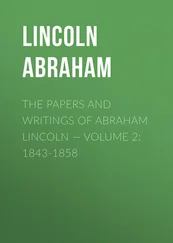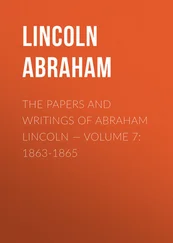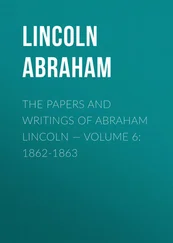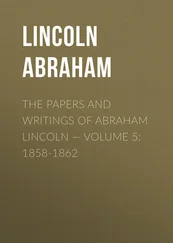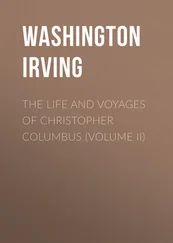Henry Fuseli - The Life and Writings of Henry Fuseli, Volume 3 (of 3)
Здесь есть возможность читать онлайн «Henry Fuseli - The Life and Writings of Henry Fuseli, Volume 3 (of 3)» — ознакомительный отрывок электронной книги совершенно бесплатно, а после прочтения отрывка купить полную версию. В некоторых случаях можно слушать аудио, скачать через торрент в формате fb2 и присутствует краткое содержание. Жанр: visual_arts, foreign_antique, foreign_prose, на английском языке. Описание произведения, (предисловие) а так же отзывы посетителей доступны на портале библиотеки ЛибКат.
- Название:The Life and Writings of Henry Fuseli, Volume 3 (of 3)
- Автор:
- Жанр:
- Год:неизвестен
- ISBN:нет данных
- Рейтинг книги:5 / 5. Голосов: 1
-
Избранное:Добавить в избранное
- Отзывы:
-
Ваша оценка:
- 100
- 1
- 2
- 3
- 4
- 5
The Life and Writings of Henry Fuseli, Volume 3 (of 3): краткое содержание, описание и аннотация
Предлагаем к чтению аннотацию, описание, краткое содержание или предисловие (зависит от того, что написал сам автор книги «The Life and Writings of Henry Fuseli, Volume 3 (of 3)»). Если вы не нашли необходимую информацию о книге — напишите в комментариях, мы постараемся отыскать её.
The Life and Writings of Henry Fuseli, Volume 3 (of 3) — читать онлайн ознакомительный отрывок
Ниже представлен текст книги, разбитый по страницам. Система сохранения места последней прочитанной страницы, позволяет с удобством читать онлайн бесплатно книгу «The Life and Writings of Henry Fuseli, Volume 3 (of 3)», без необходимости каждый раз заново искать на чём Вы остановились. Поставьте закладку, и сможете в любой момент перейти на страницу, на которой закончили чтение.
Интервал:
Закладка:
53. Whenever the medium of any work, whether lines, colour, grouping, diction, becomes so predominant as to absorb the subject in its splendour, the work is degraded to an inferior order.
54. The painter, who makes an historical figure address the spectator from the canvass, and the actor who addresses a soliloquy to you from the stage, have equal claims to your contempt or pity.
55. Common-place figures are as inadmissible in the grand style of painting as common-place characters or sentiments in poetry.
Coroll. – Common-place figures were first introduced by the gorgeous machinists of Venice, and adopted by the Bolognese school of Eclectics; the modern school of Rome from Carlo Maratta to Battoni knew nothing else; and they have been since indiscriminately disseminated on this side of the Alps, by those whom mediocrity obliged to hide themselves in crowds, or a knack at grouping stimulated to aggregate a rabble.
56. The copious is seldom grand.
57. Glitter is the refuge of the mean.
58. All apparatus destroys terror, as all ornament grandeur: the minute catalogue of the cauldron's ingredients in Macbeth destroys the terror attendant on mysterious darkness; and the seraglio-trappings of Rubens annihilate his heroes.
59. All conceits, not founded upon probable combinations of nature, are absurd. The capricci of Salvator Rosa, and of his imitators, are, to the fiends of Michael Angelo, what the paroxysms of a fever are to the sallies of vigorous fancy.
60. Distinguish carefully between bold fancy and a daring hand; between the powers of nature and the acquisitions of practice: most of Salvator's banditti are a medley made up of starveling models and the shreds of his lumber-room brushed into notice by a daring pencil.
61. Distinguish between boldness and brutality of hand, between the face of beauty and the bark of a tree .
62. All mediocrity pretends.
63. Invention, strictly speaking, being confined to one moment, he invents best who in that moment combines the traces of the past, the energy of the present, and a glimpse of the future.
64. Composition has been divided into natural and ornamental: that is dictated by the subject, this by effect or situation.
65. Distinguish between composition and grouping: though none can compose without grouping, most group without composing.
Coroll. – The assertion that grouping may not be composing, has been said to make a distinction without a difference: as if there had not been, still are, and always will be squadrons of artists, whose skill in grouping can no more be denied, than their claim to invention, and consequently to composition, admitted, if invention means the true conception of a subject and composition the best mode of representing it. After the demise of Lionardo and Michael Angelo, their successors, however discordant else, uniformly agreed to lose the subject in the medium. Raffaello had no followers. Tiziano and something of Tintoretto excepted, what instance can there be produced of composition in the works of the Venetian school? Are the splendid masquerades of Paolo to be dignified with that name? If composition has a part in the effusions of the great founder of the Lombard school, it surely did not arrange the celestial hubbub of his cupolas, content to inspire his Io, the Zingaro, Christ in the Garden, perhaps (I speak with diffidence) his Notte. So characteristically separate from real composition are the most splendid assemblages, the most happy combinations of figures, if founded on the mere power of grouping, that one of the first, and certainly the most courteous critic in Art of the age, in compliment to the Venetian and Flemish Schools, has thought proper to divide composition into legitimate and ornamental.
66. Ask not, what is the shape of composition? You may in vain climb the pyramid, wind with the stream, or point the flame; for composition, unbounded like Nature, and her subjects, though resident in all, may be in none of these.
67. The nature of picturesque composition is depth, or to come forward and recede.
Coroll. – Pausias, in painting a sacrifice, foreshortened the victim, and threw its shade on part of the surrounding crowd, to show its height and length. 8 8 Plin. lib. xxxv.
68. Sculpture composes in single groups or separate figures, but apposition is the element of basso-relievo.
Coroll. – Poussin painted basso-relievo, Algardi chiselled pictures.
69. He who treats you with all the figures of a subject save the principal, is as civil or important as he who invites you to dine with all a nobleman's family, the master only excepted: this sometimes may be no loss, but surely you cannot be said to have dined with the chief of the family.
70. Examine whether an artist treats you with a subject, or only with some of its limbs: many see only the lines, some the masses, others the colours, and not a few the mere back-ground of their subject.
71. Second thoughts are admissible in painting and poetry only as dressers of the first conception; no great idea was ever formed in fragments.
72. He alone can conceive and compose, who sees the whole at once before him.
73. He who conceives the given point of a subject in many different ways, conceives it not at all. Appeal to the artist's own feelings; you will ever find him most reluctant to give up that part of it which he conceived intuitively, and readier to dismiss that which harassed him by alteration.
74. Metaphysical composition, if it be numerous, will be oftener mistaken for dilapidation of fragments than regular distribution of materials.
Coroll. – The School of Athens as it is called, by Raffaelle, communicates to few more than an arbitrary assemblage of speculative groups: yet if the subject be the dramatic representation of philosophy, as it prepares for active life, the parts of the building are not connected with more regular gradation than those groups: fitted by physical and intellectual harmony, man ascends from himself to society, from society to God.
75. No excellence of execution can atone for meanness of conception.
76. Grandeur of conception will predominate over the most vulgar materials – if in the subjects of Jesus before Pilate, by Rembrandt, and the Resuscitation of Lazarus by Lievens, 9 9 This picture, during a period of nearly half a century, graced the collection of Charles Lambert, Esq. of Paper-buildings, Temple; where it remained without having been washed or varnished. At his death it was purchased by my friend Mr. Knowles, has been cleaned by a skilful hand, and restored to nearly its pristine state.
the materials had all been equal to the conception, they would have been works of superhuman powers.
77. Repetition of attitude and gesture invigorates the expression of the grand: as a torrent gives its own direction to every object it sweeps along, so the impression of a sublime or pathetic moment absorbs the contrasts of inferior agents.
78. Tameness lies on this side of expression, grimace overleaps it; insipidity is the relative of folly, eccentricity of madness.
79. The fear of not being understood, or felt, makes some invigorate expression to grimace.
80. The temple of expression, like that of religion, has a portico and a sanctuary; that is trod by all, this only admits her votaries.
81. Propriety, modesty and delicacy, guard expression from the half-conceits of the weak, the intemperance of the extravagant, and the brutality of the vulgar.
82. Sensibility is the mother of sympathy. How can he paint Beauty who has not throbbed at her charms? How shall he fill the eye with the dew of humanity whose own never shed a tear for others? How can he form a mouth to threaten or command, who licks the hereditary spittle of princes?
Читать дальшеИнтервал:
Закладка:
Похожие книги на «The Life and Writings of Henry Fuseli, Volume 3 (of 3)»
Представляем Вашему вниманию похожие книги на «The Life and Writings of Henry Fuseli, Volume 3 (of 3)» списком для выбора. Мы отобрали схожую по названию и смыслу литературу в надежде предоставить читателям больше вариантов отыскать новые, интересные, ещё непрочитанные произведения.
Обсуждение, отзывы о книге «The Life and Writings of Henry Fuseli, Volume 3 (of 3)» и просто собственные мнения читателей. Оставьте ваши комментарии, напишите, что Вы думаете о произведении, его смысле или главных героях. Укажите что конкретно понравилось, а что нет, и почему Вы так считаете.




